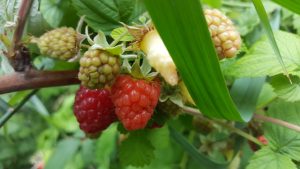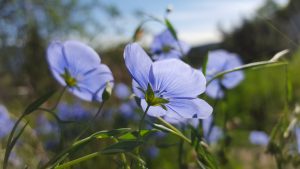What’s the first thought that comes to mind when you think school? Joy. Ha! I am being cheeky, I know. It’s likely a math thought. Or science. Shudder. Not me; I am of the geek tribe that finds such subjects attractive. A language of sorts that helps in translating the world around into yet another comprehensible way. Or not, say many disillusioned former schoolers.
The first few days of having Tony at home two years ago when we started homeschooling came with a few serious confidence jolts. Do I have what it takes to do it? What about potholes? Because I knew there will be some. (There have been.) It felt like this: there’s a gate you open, you make your way through and then look for the path. There is none. You have to make one; with every step you take, a path appears. then you get lost. Repeat.
‘Do you like learning at home?’ I’d ask them both occasionally. Yes. Are they just being polite? Nope, we learn to be honest here. So no. Still, the path we make… Me, the guide. Them boys following.
I step unsurely at times because ‘what if?…’ – and most often, the what if is followed by a dark cloud. Gulp. The negative alternatives. Some days become so intense you’ll be thinking you’re heading for disaster. We cover subjects of all kinds, and then we make it our own with subjects we NEED to cover. Say, for example… emotions.
For all the stormy days we’ve had along the way, we need a manual on being. Emotions as they happen. Learning what takes us straight into the brambles where the spikes are and then there needs to be some learning on how to make our way out. Boys and emotions. There’s a book I cherish that is cradled among other parenting books: it’s called Raising Cain: Protecting the emotional life of boys (Dan Kindlon and Michael Thompson.) A peek inside a boy’s heart. The mysterious realm of storms and wonderful adventures.
So we made it a subject in our school. Ditto for learning to communicate respectfully, aiming for non-violence but feeling our way towards where one can stand tall, humble and vulnerable at the same time.
We talk about anger and joy, about letting others know how their actions make you feel, about the courage to look at yourself in the mirror that someone holds for you to see… We talk about being humble enough to accept that sometimes you’ll be the one leaving marks that do not show though they do exist among people’s feelings. Shreds of pain here and there, which you cause without meaning to do so.
On any given day, emotions filling us like a cup fills with tea. You pour until you reach below the brim. Physics dictate that if you continue the cup will overflow. Then you have to deal with the mess. We accept that as a fact because we see it happen. No witnesses needed, no explanations from the cup as to why everything went past the edge. Because you overdid it, that’s why. When it comes to pouring too much onto people and seeing their emotions overflow… there’s a lot to learn.
Kindness, we talk about that too. Perspective changing when you’re wearing each other’s shoes. Emotions exist and they are part of a person. You feel and your feelings matter. We more than touch on that. We look into each other’s eyes after a storm and that takes courage. It makes it possible to stay close to each other, to reach out when a curved ball reaches your soft sides, to laugh with all your heart, to cry when all becomes too much to bear. To listen when one says it hurts. To forgive and to learn why asking for forgiveness is such a gargantuan task . . . And yet, it’s vital. It makes hearts softer and minds more understanding of other people’s plight.
So onwards we go through days of learning. We tell stories, the boys open up and bravely speak up when the other’s actions are hurting, and we try to understand, repair trust and reinforce the connections. I am but a guide for it all, yet learning as much as they do from each of the subjects, emotions included (mine too, yes.)
For this is learning. Of ourselves most of all. With humbleness, with gratefulness, with courage to bare it all, emotion-wise. Hugs at bedtime are a must. Tomorrow we trek on farther than today. We follow a path we make with our own footsteps…

 The reasons why they would learn and understand the multi-faceted process that is food preservation go beyond the rather simplistic ‘because it’s cool to have a homemade jar of jam or…(fill in the blanks)’. In our little school, we are shooting for the big picture. The bird’s eye view if you will.
The reasons why they would learn and understand the multi-faceted process that is food preservation go beyond the rather simplistic ‘because it’s cool to have a homemade jar of jam or…(fill in the blanks)’. In our little school, we are shooting for the big picture. The bird’s eye view if you will. What goes into growing food? Hard work, enriching the soil using natural methods (compost and manure), more hard work and plenty of fresh water, plus a community to sell it to or people to share it with. Conventionally grown food often comes with chemicals many of which can have effects on the brain, endocrine system and they can also increase the risk of allergies and chemical sensitivities. It also comes with a variable-size carbon footprint, depending where it is shipped from. Possibly some low-paid workers in there too. Another level of unaffordability you could say.
What goes into growing food? Hard work, enriching the soil using natural methods (compost and manure), more hard work and plenty of fresh water, plus a community to sell it to or people to share it with. Conventionally grown food often comes with chemicals many of which can have effects on the brain, endocrine system and they can also increase the risk of allergies and chemical sensitivities. It also comes with a variable-size carbon footprint, depending where it is shipped from. Possibly some low-paid workers in there too. Another level of unaffordability you could say. Here we are. A new page of the new blog that will follow our homeschooling adventure. The start day was supposed to be last month as the new school year debuted. Well, it’s this month instead.
Here we are. A new page of the new blog that will follow our homeschooling adventure. The start day was supposed to be last month as the new school year debuted. Well, it’s this month instead.